How to write a great research paper Mazorenko
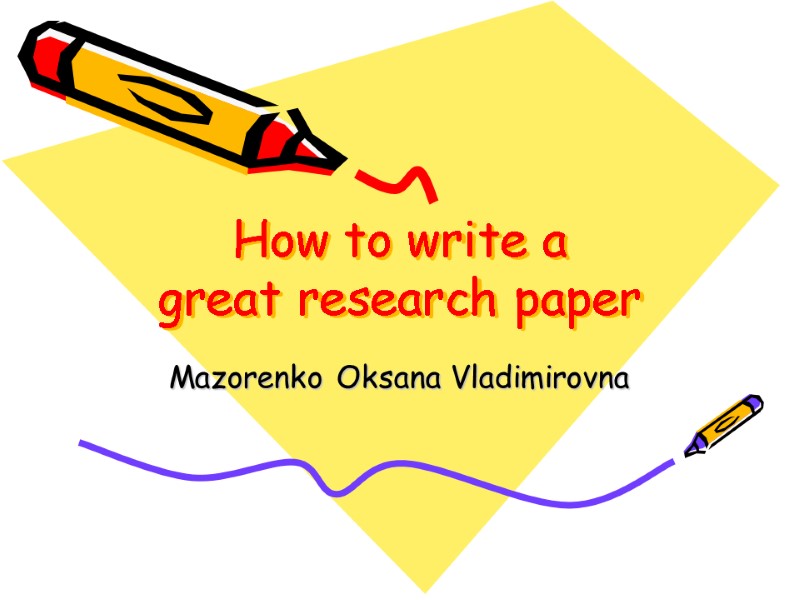
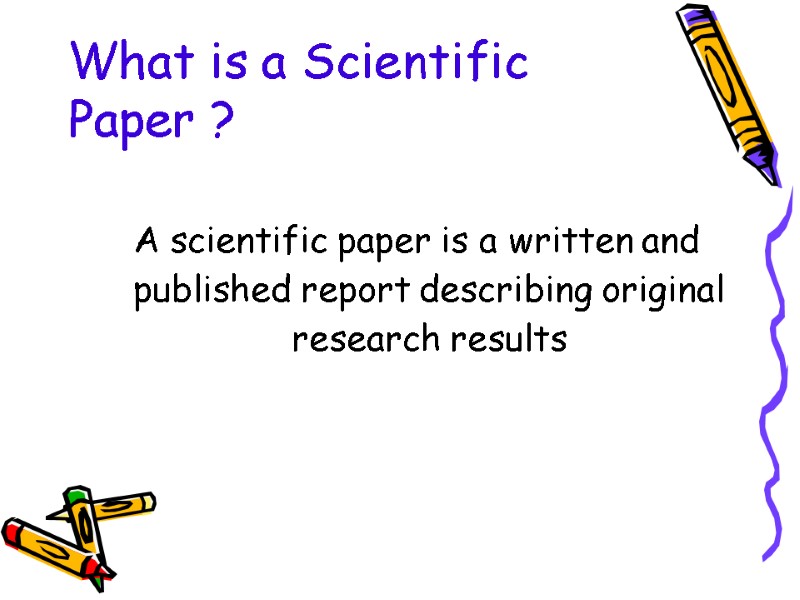
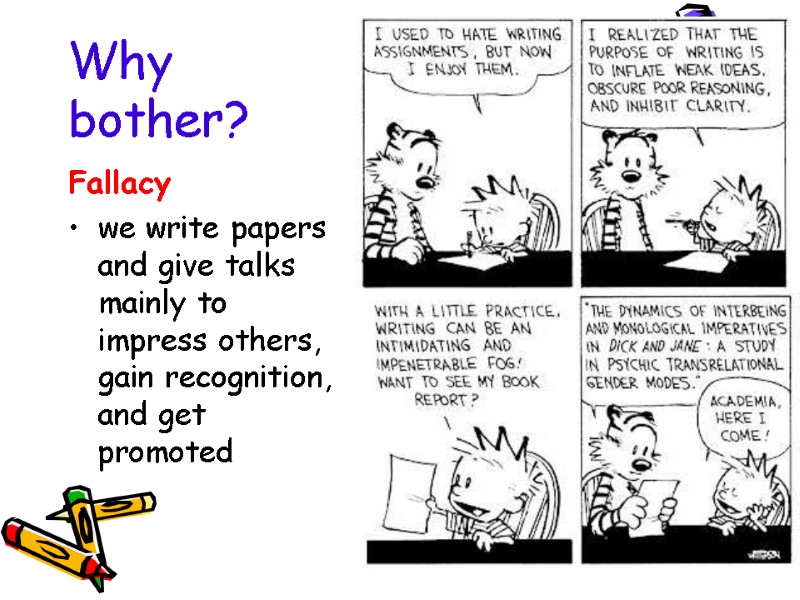
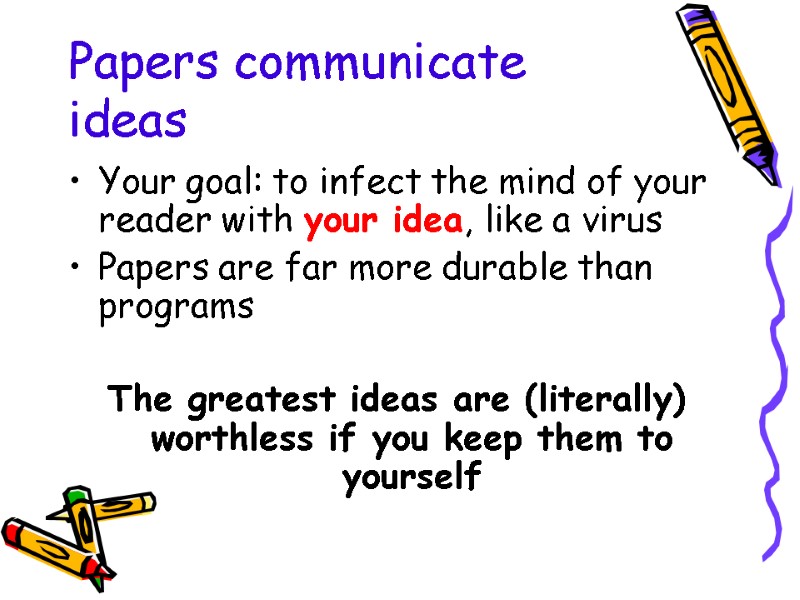
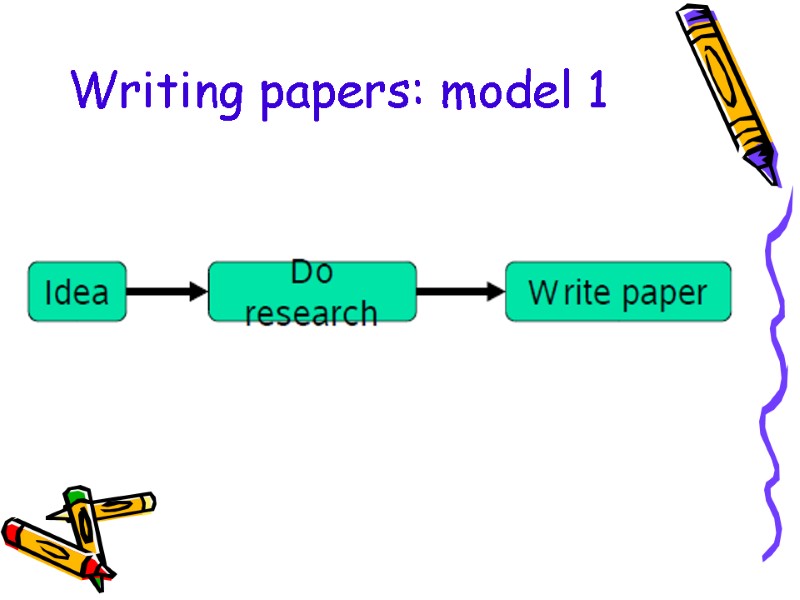
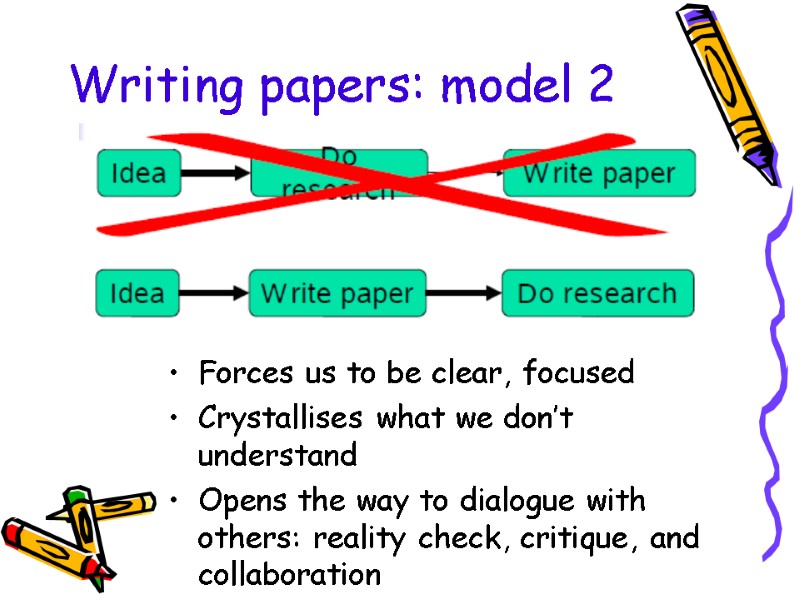
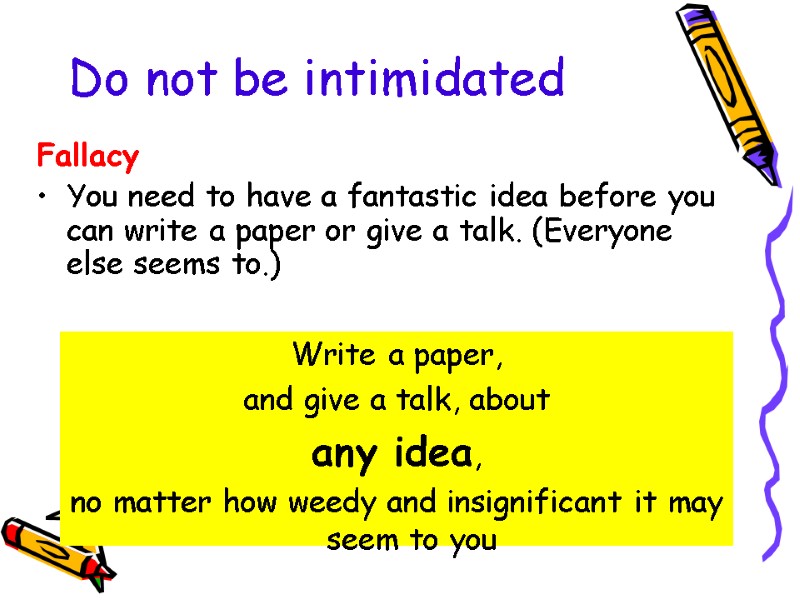
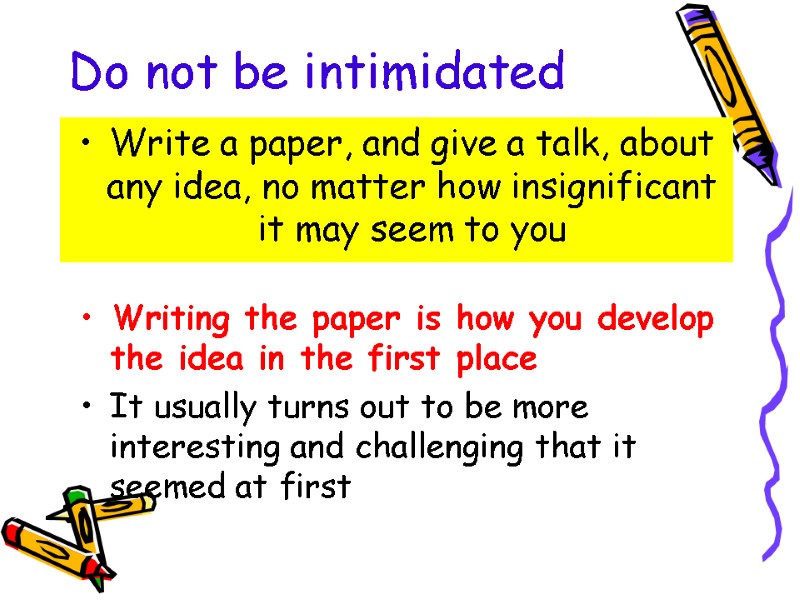
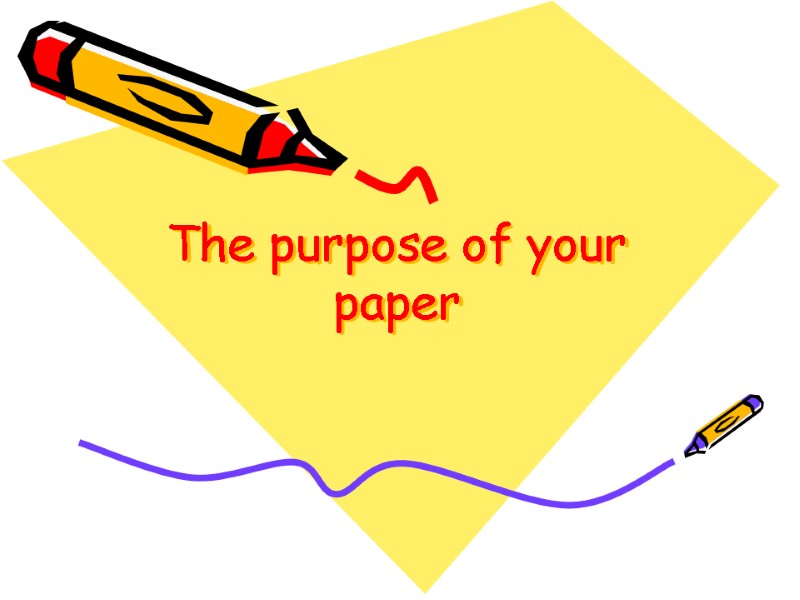
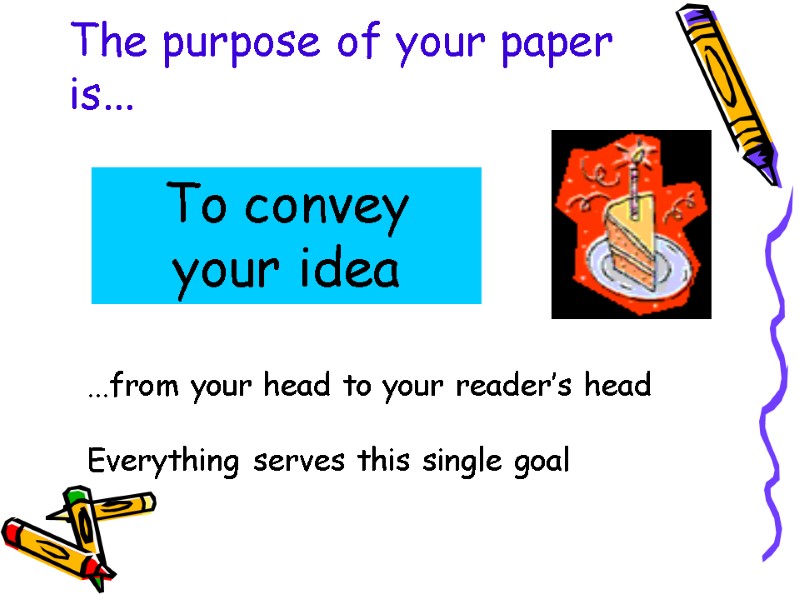
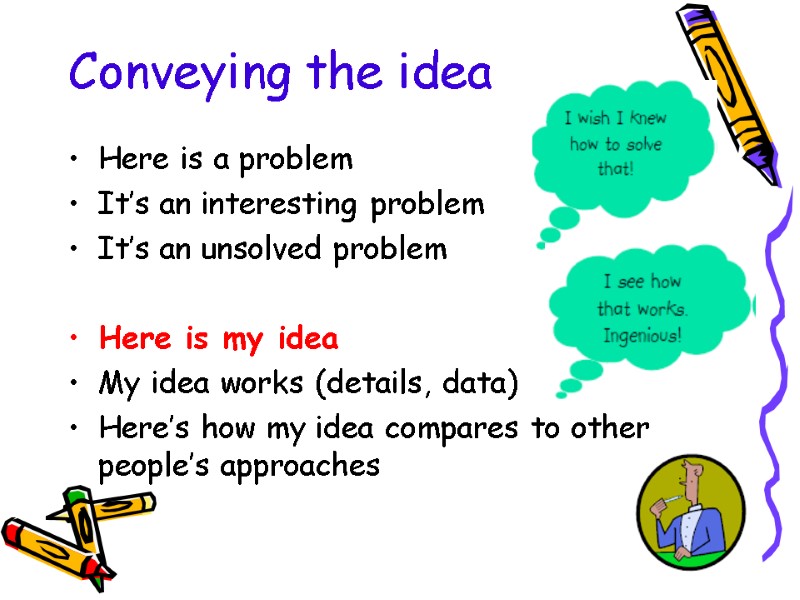
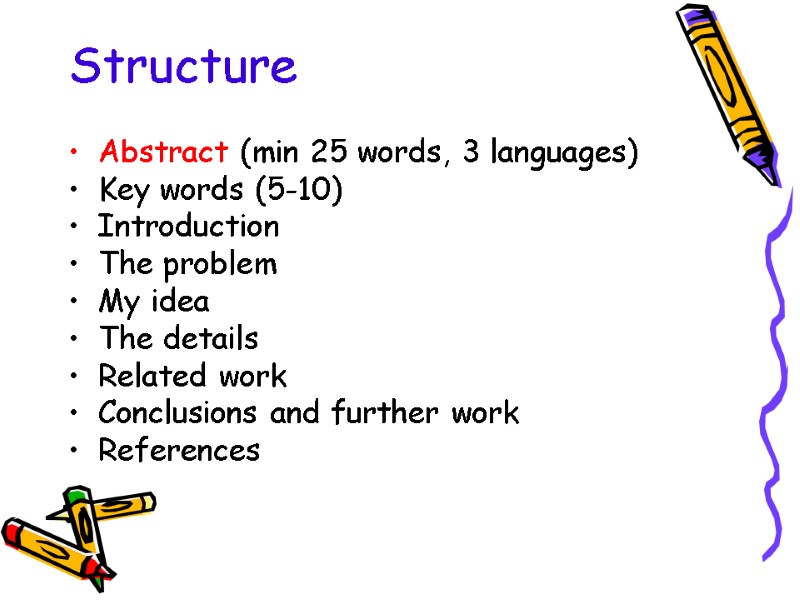
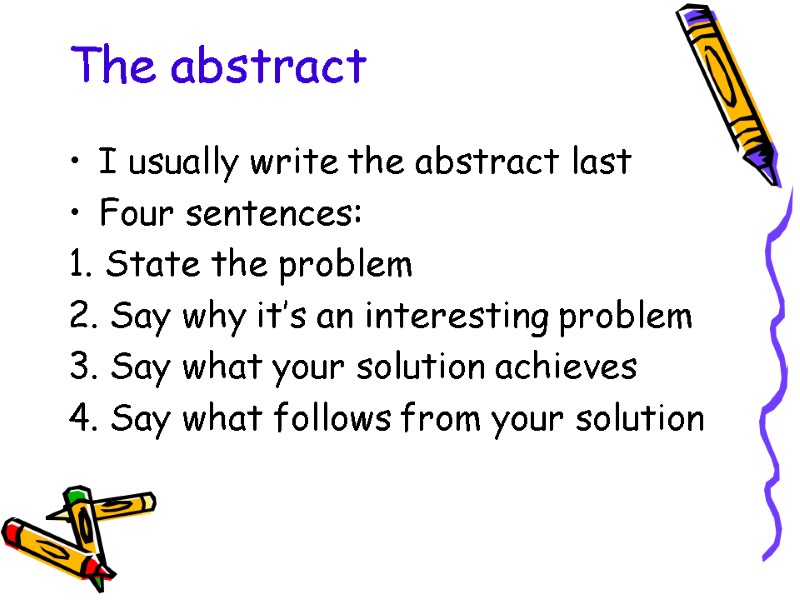
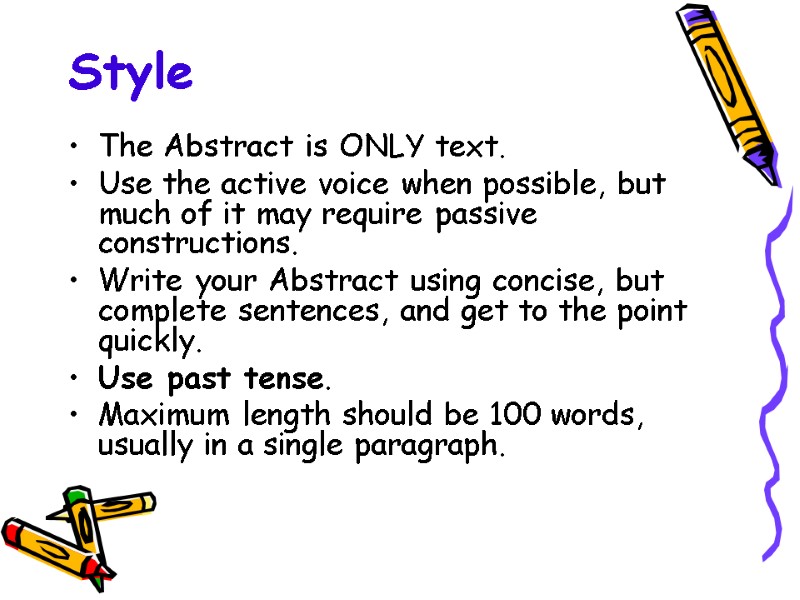
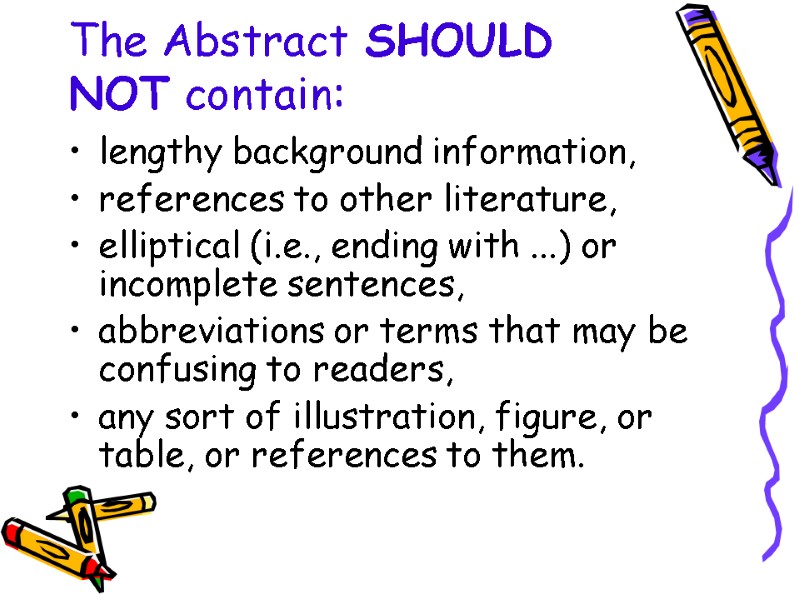
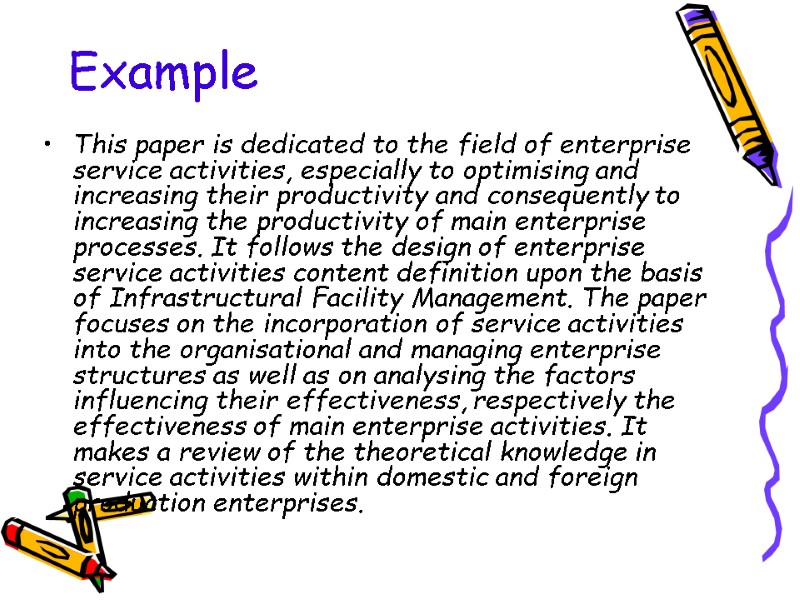
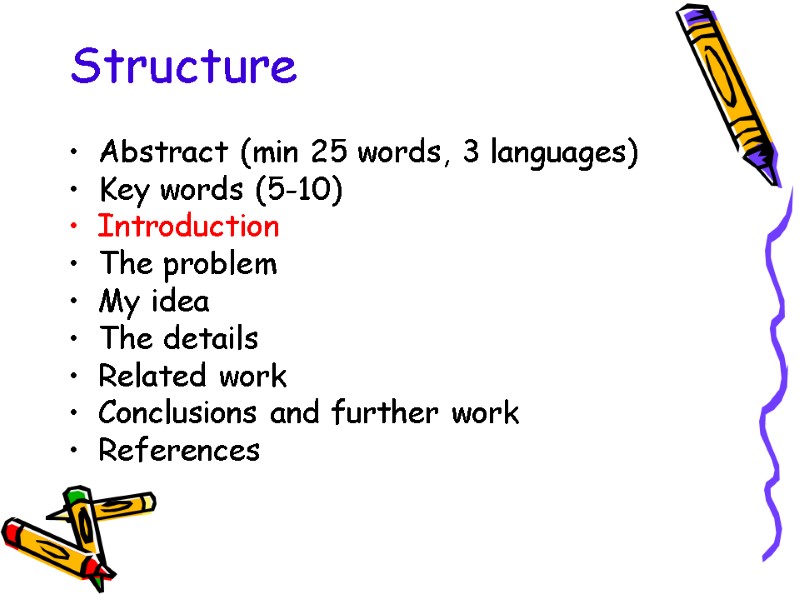
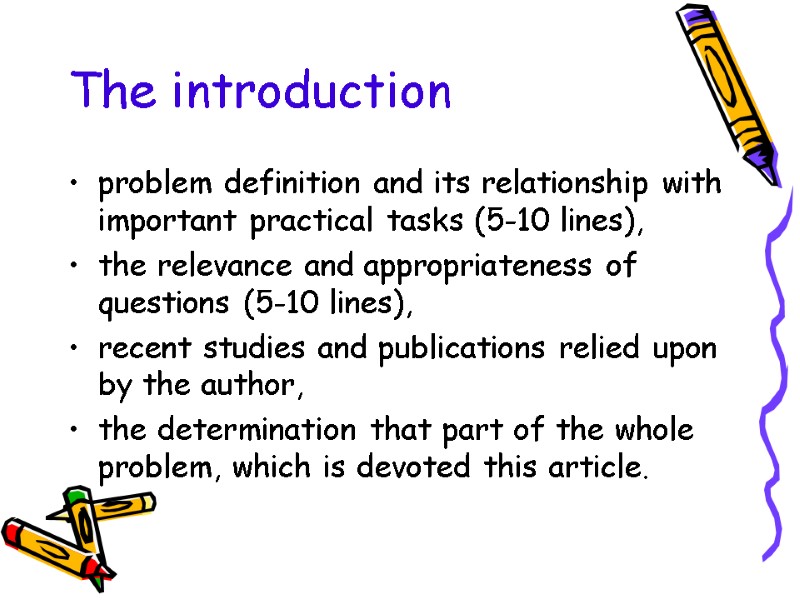
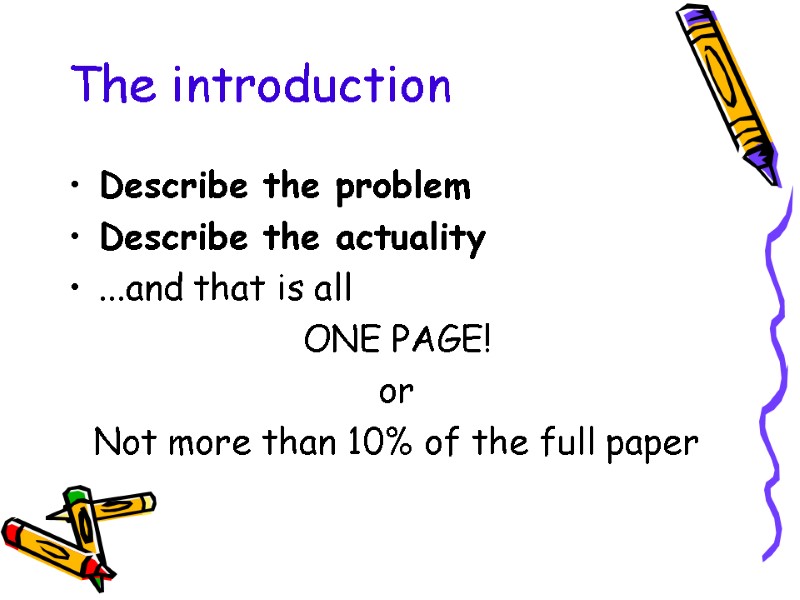
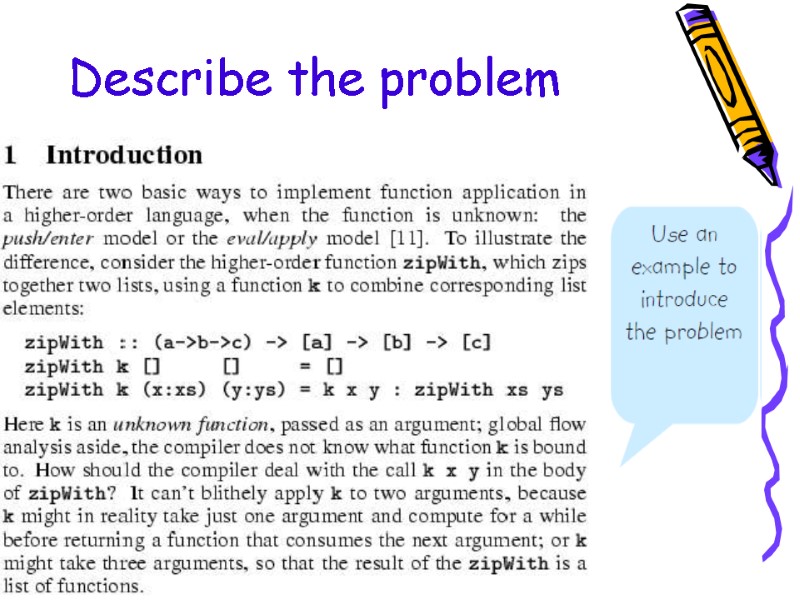
![No related work yet! We adopt the notion of transaction from Brown [1], as No related work yet! We adopt the notion of transaction from Brown [1], as](https://present5.com/presentacii-2/20171208\14670-training_1.ppt\14670-training_1_21.jpg)
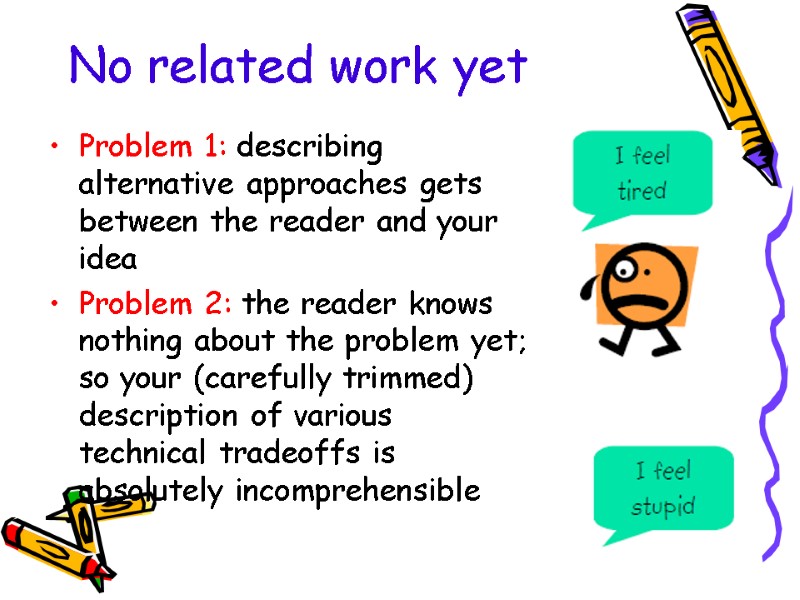
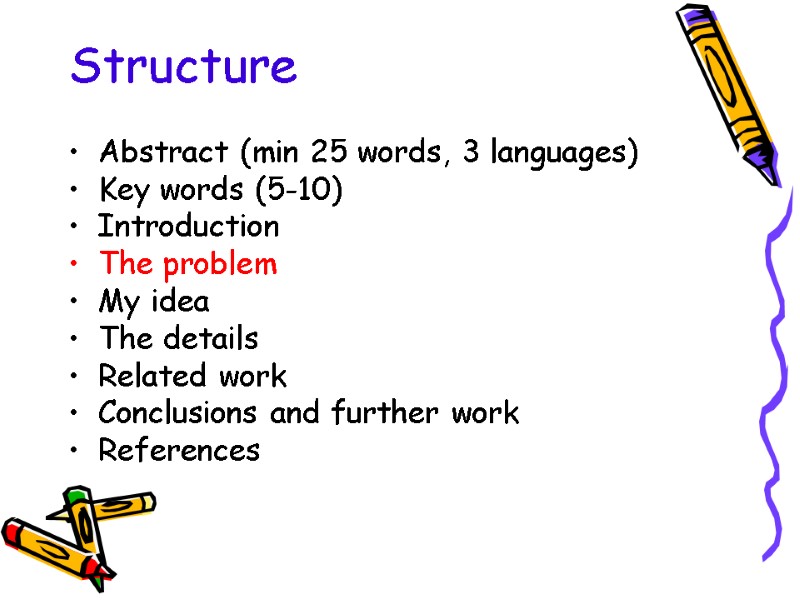
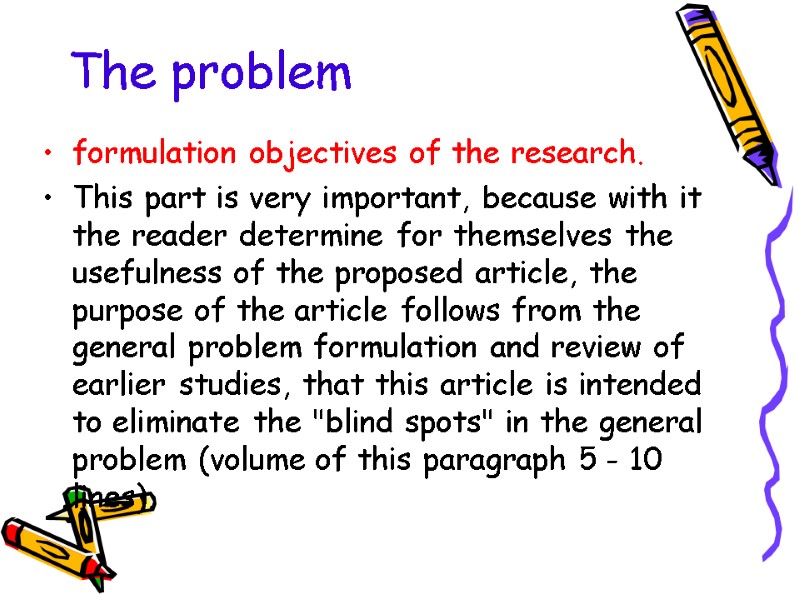
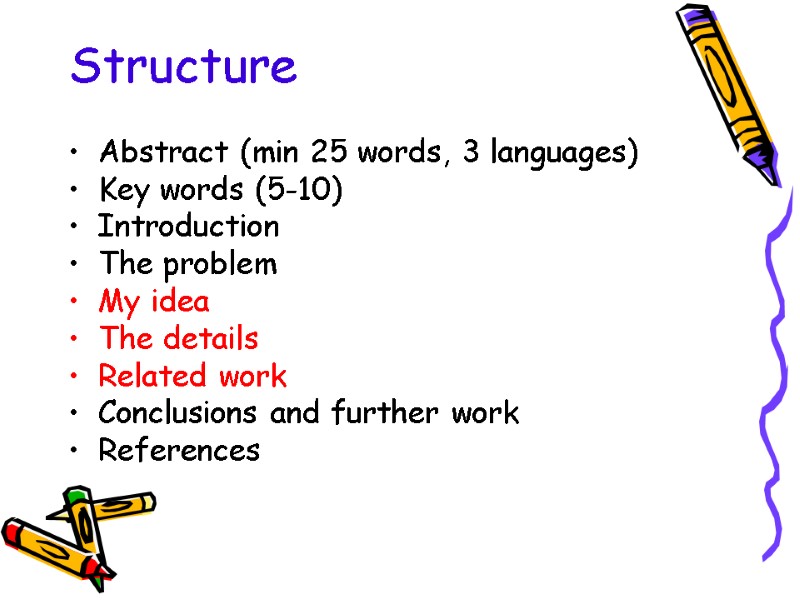
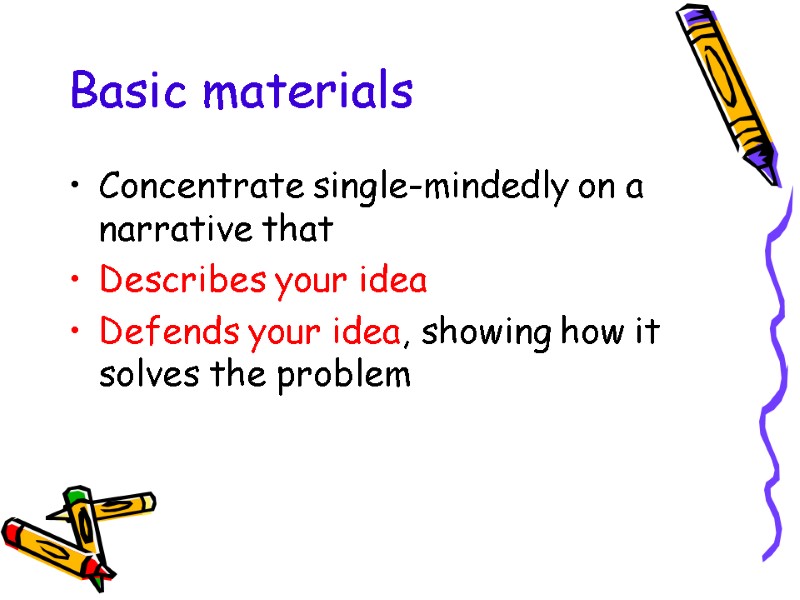
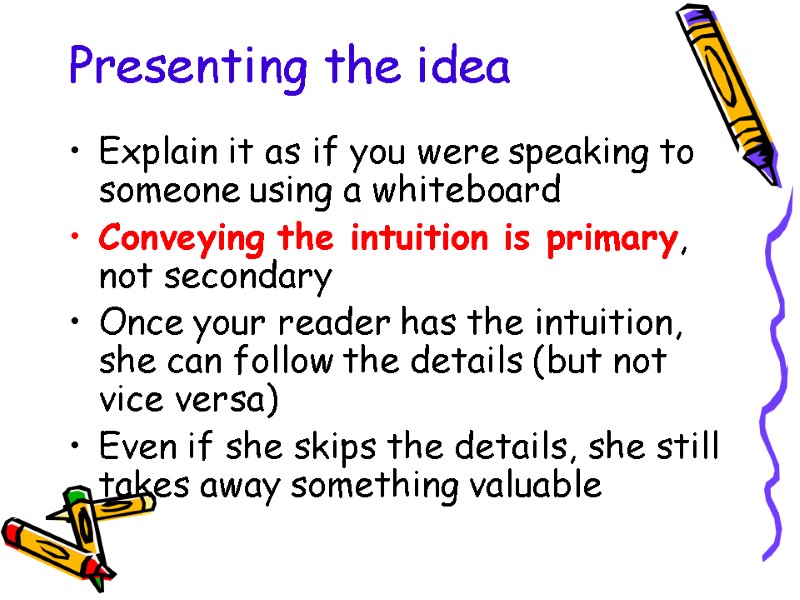
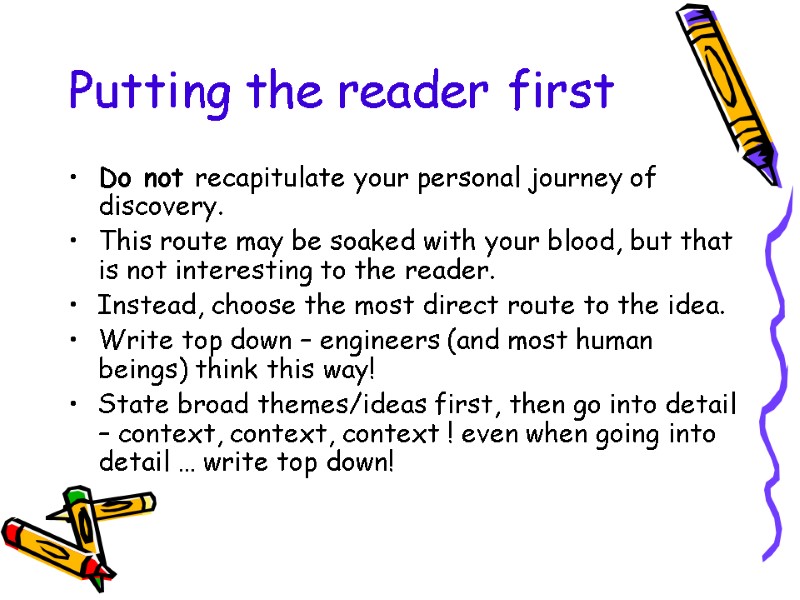
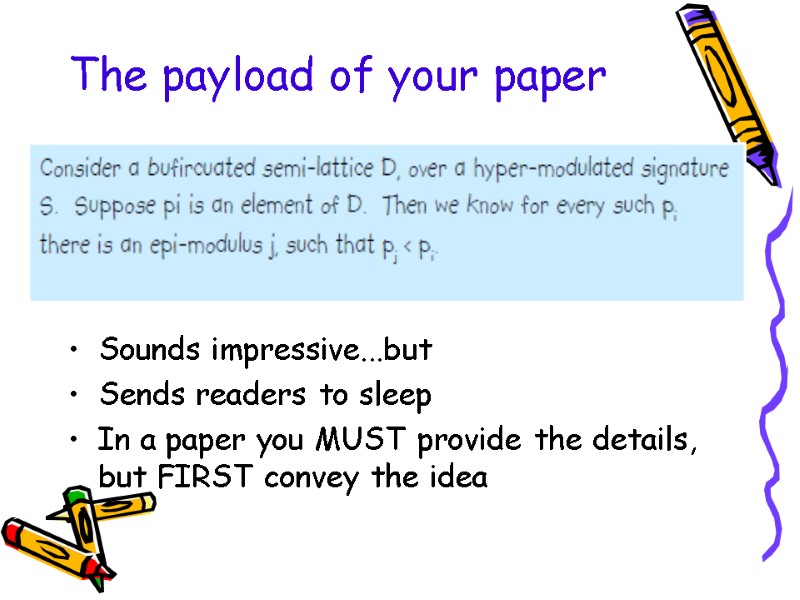
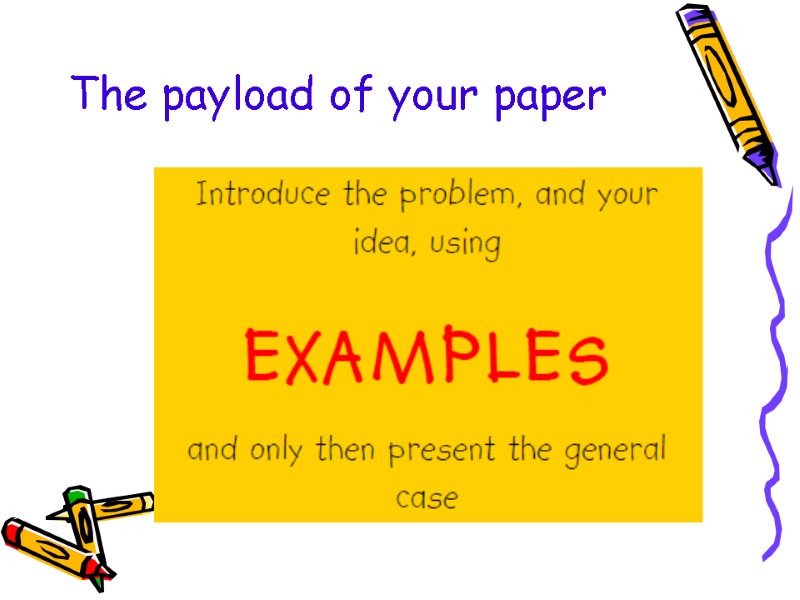
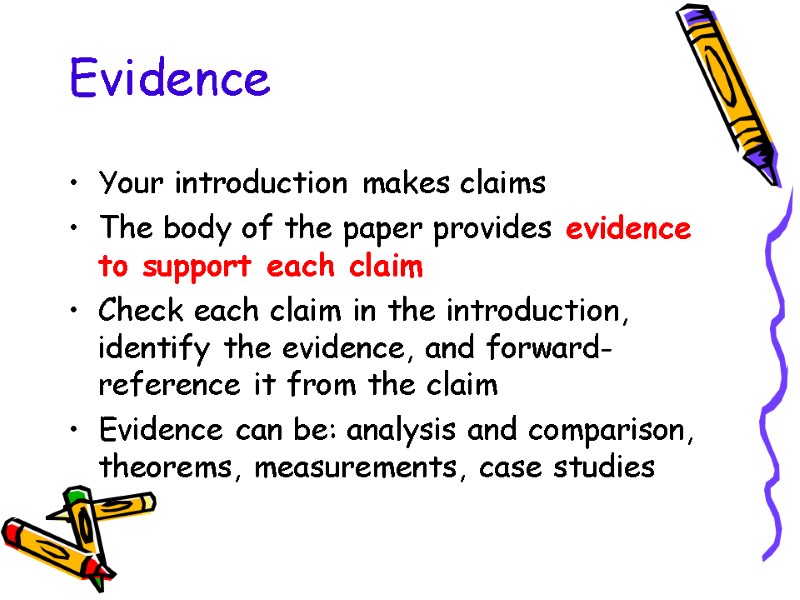
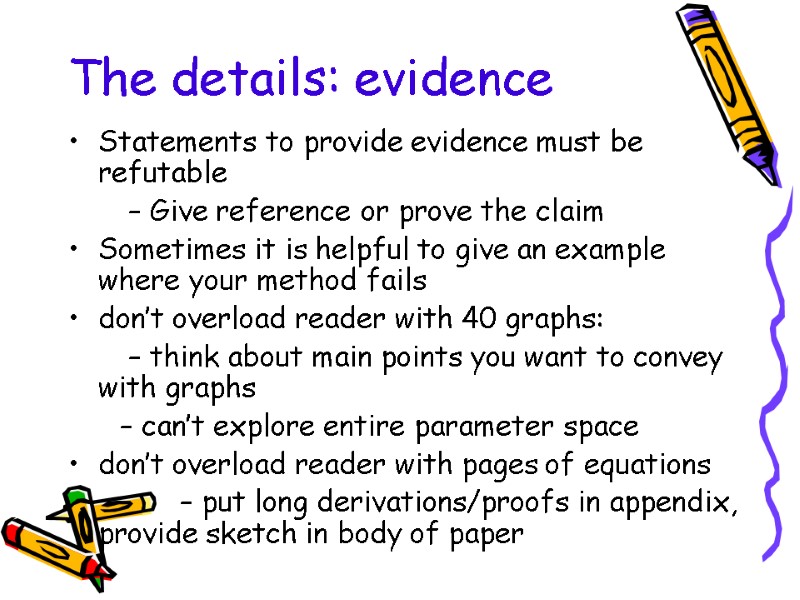
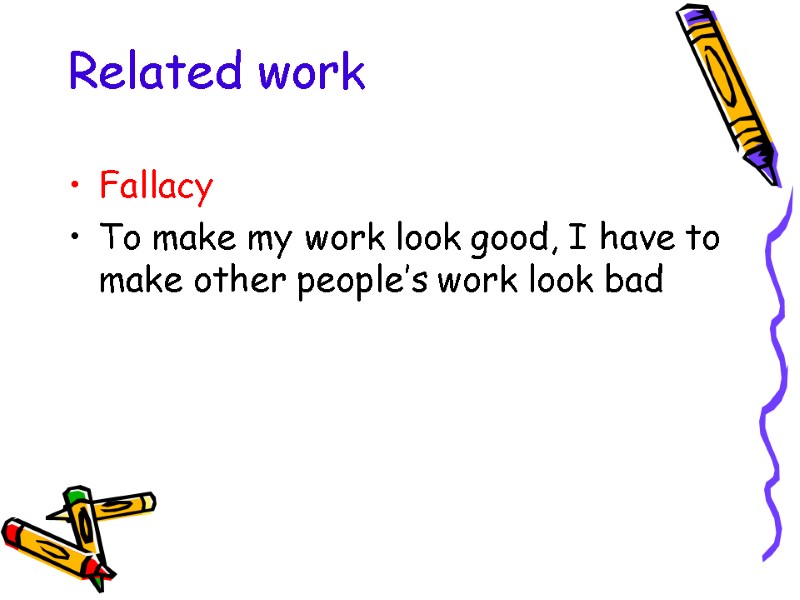
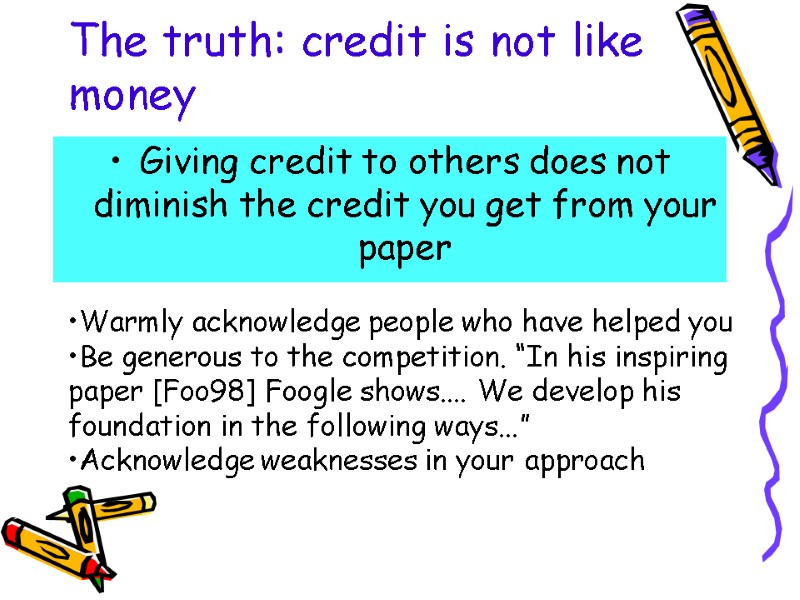
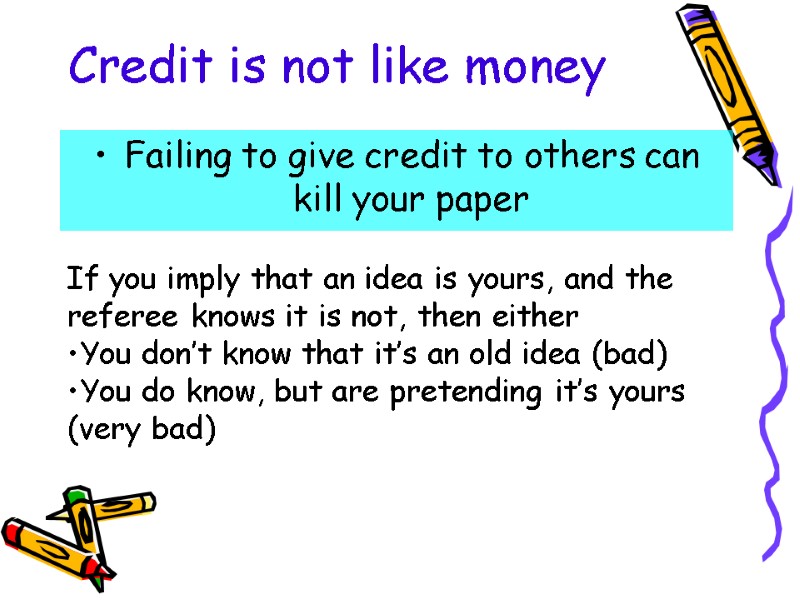
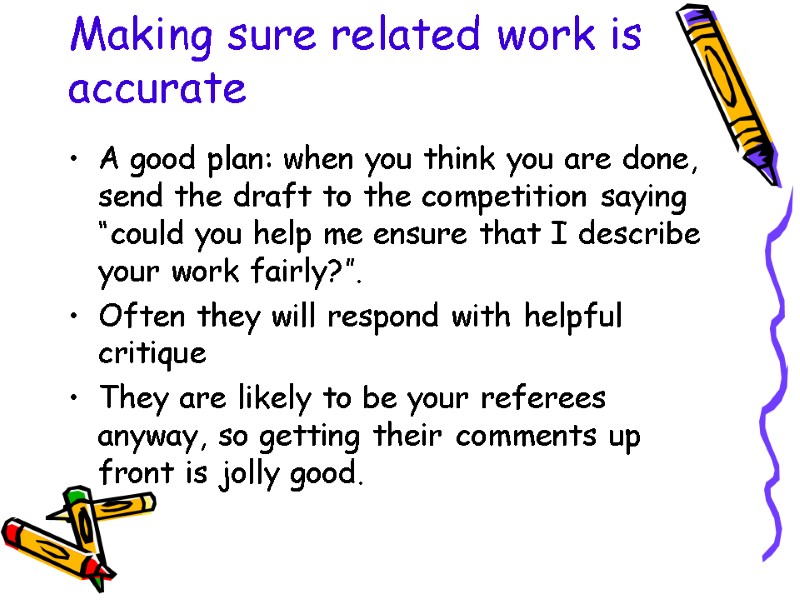
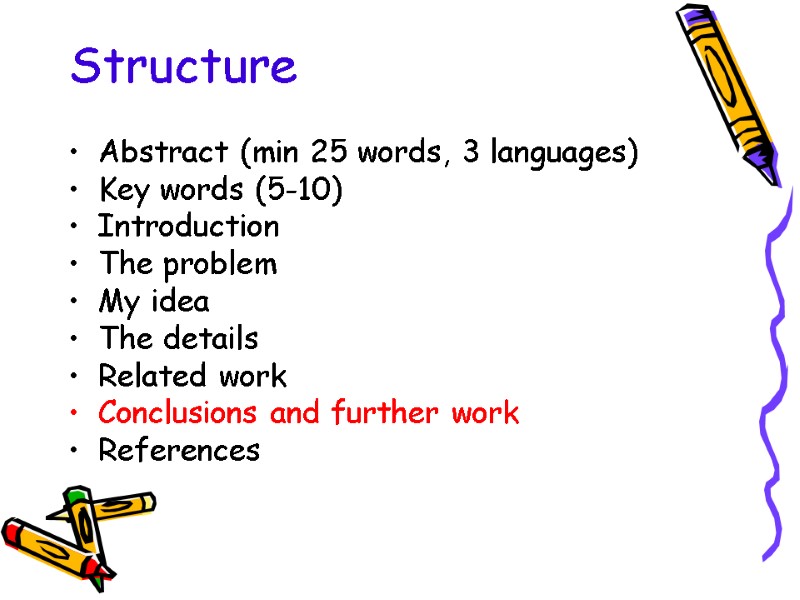
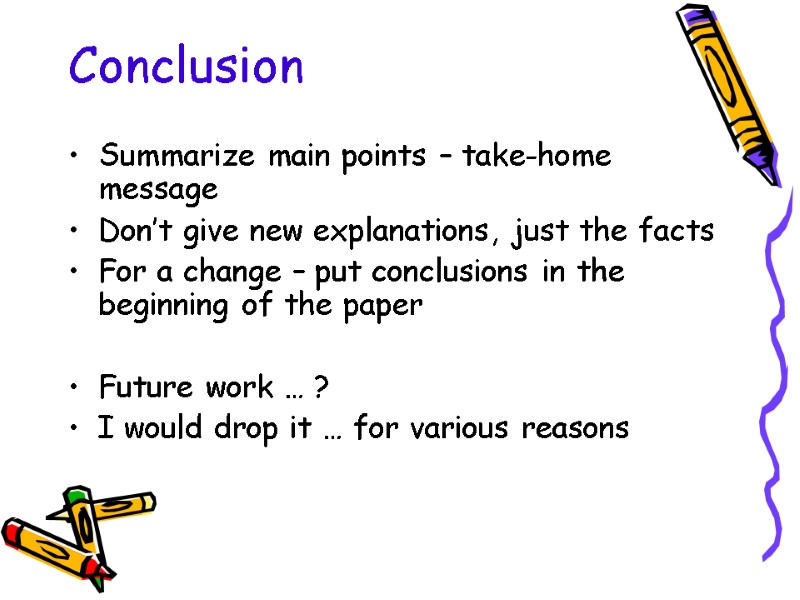
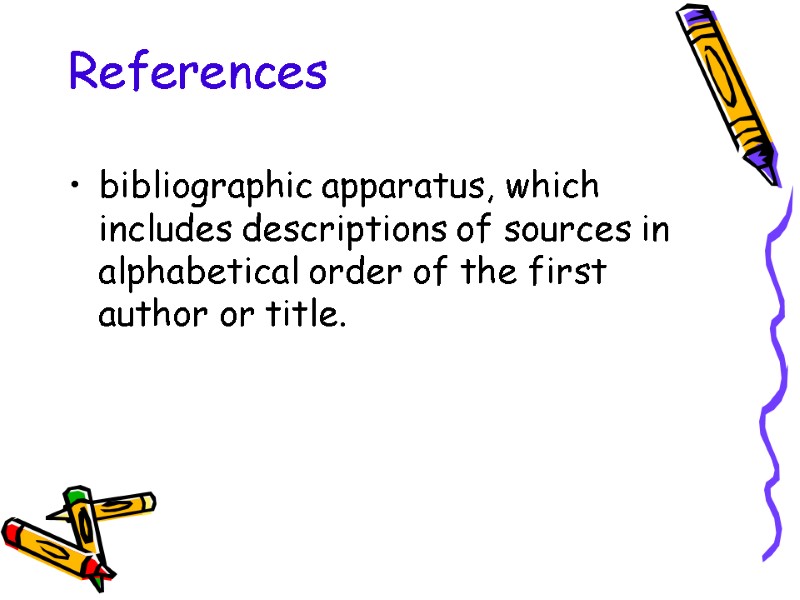
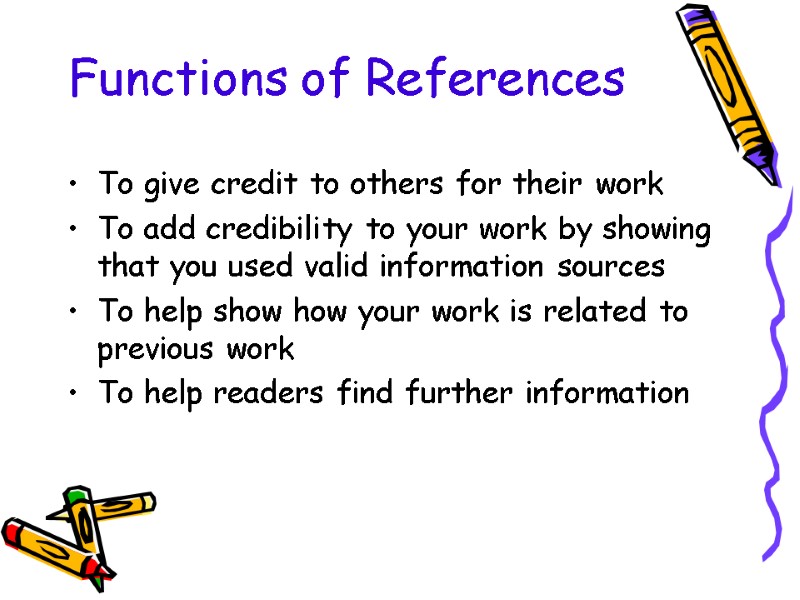
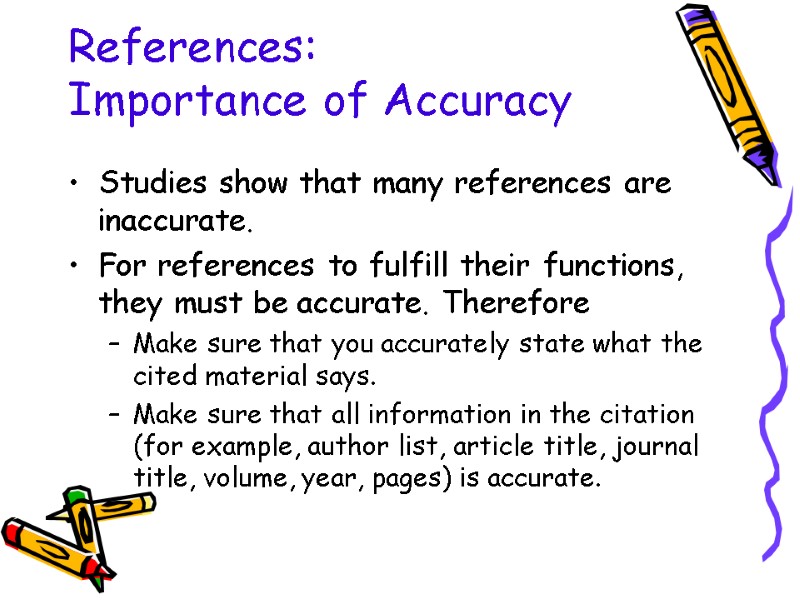
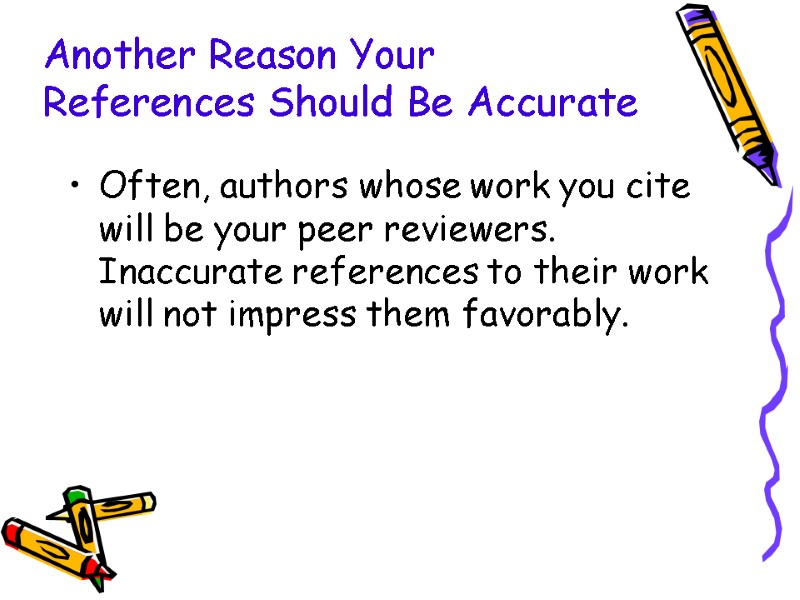
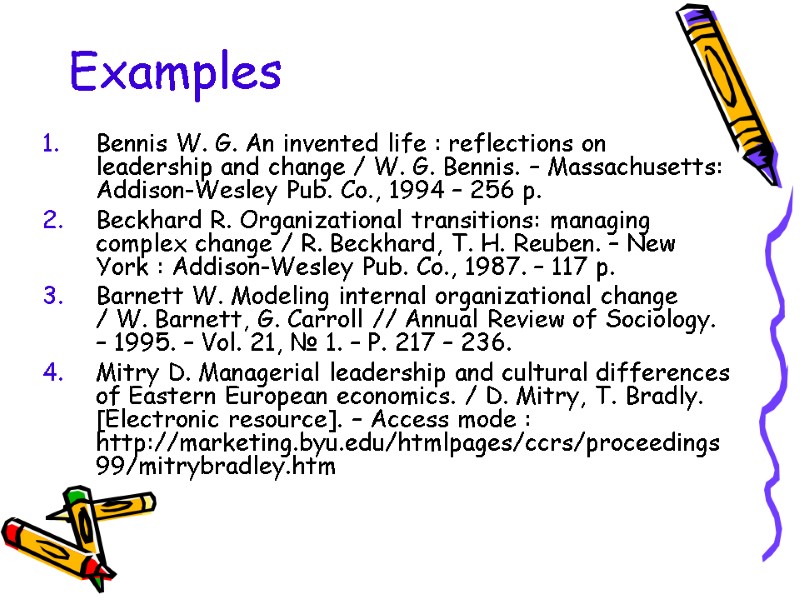
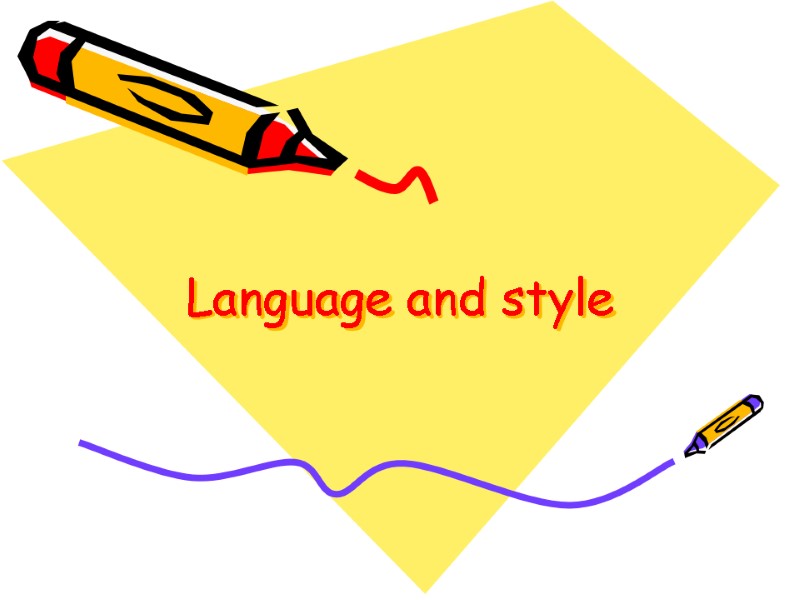
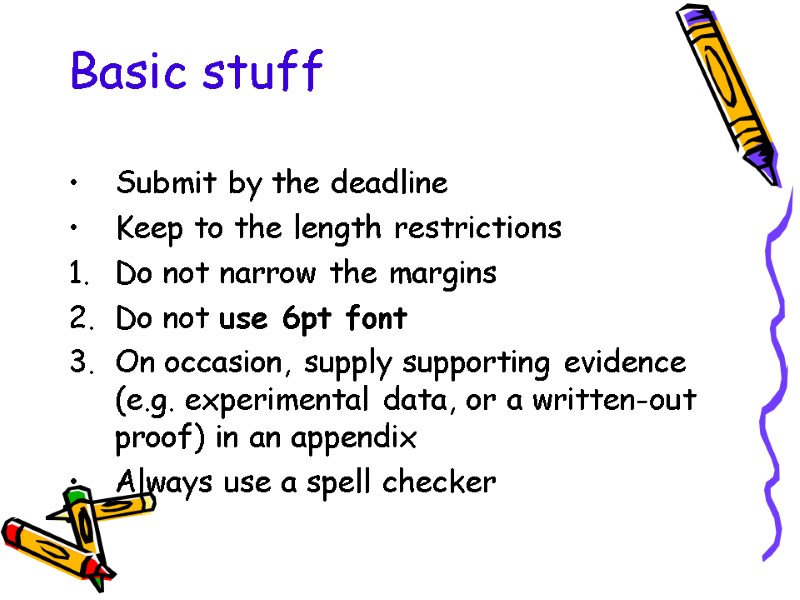
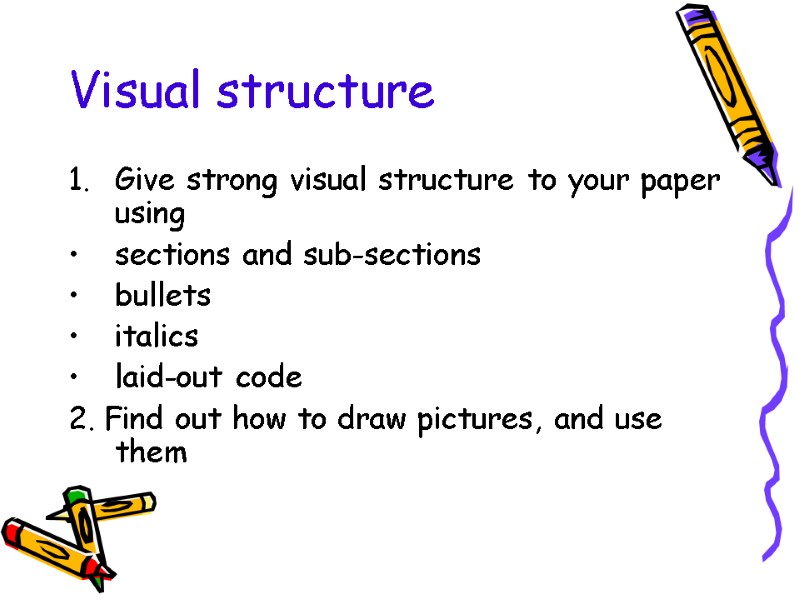
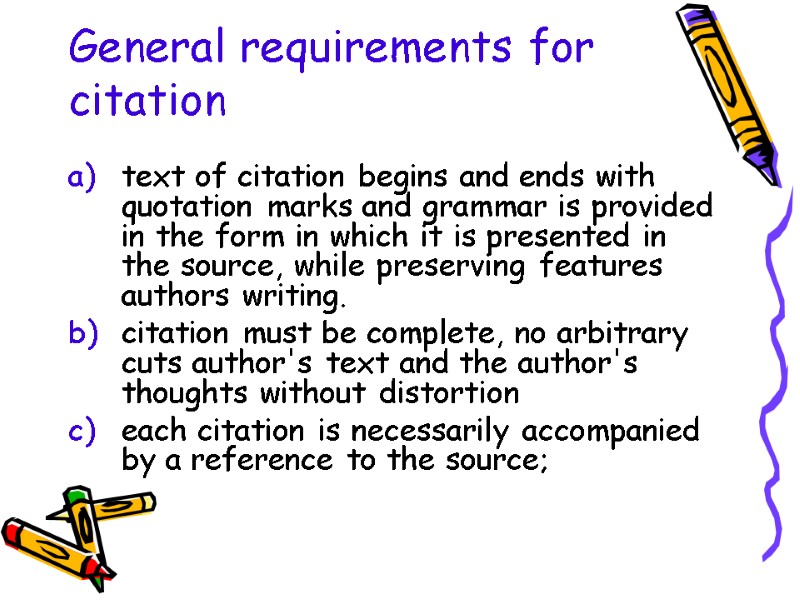
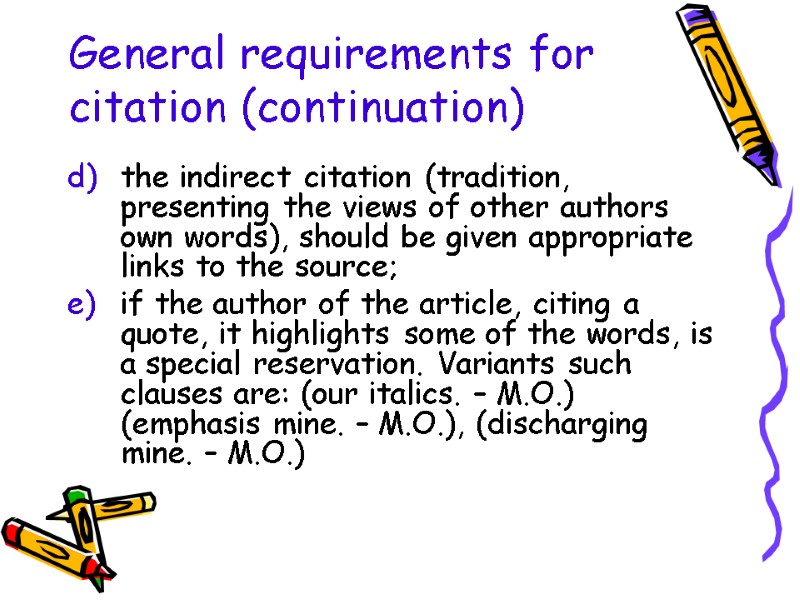
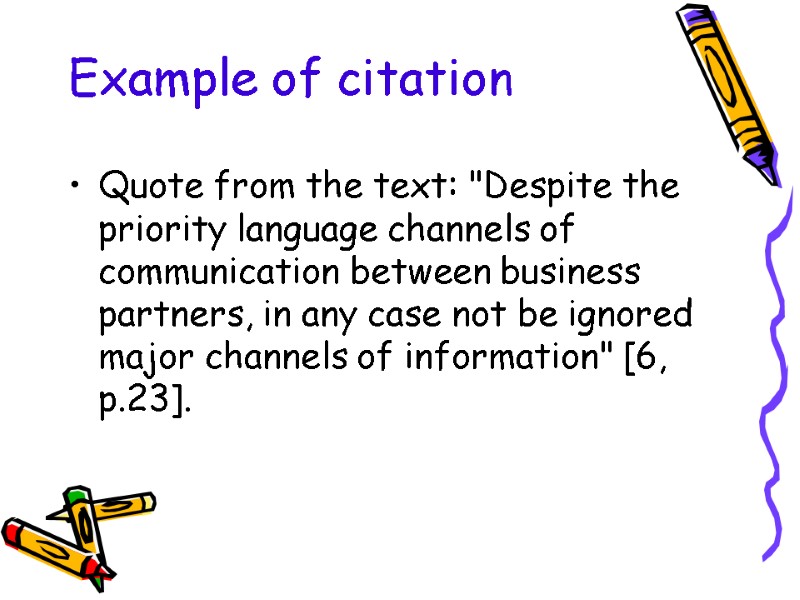
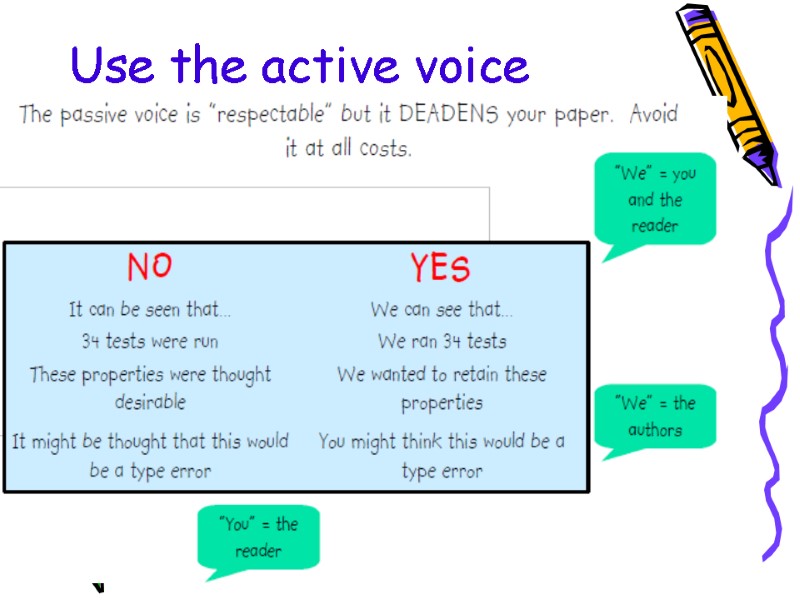
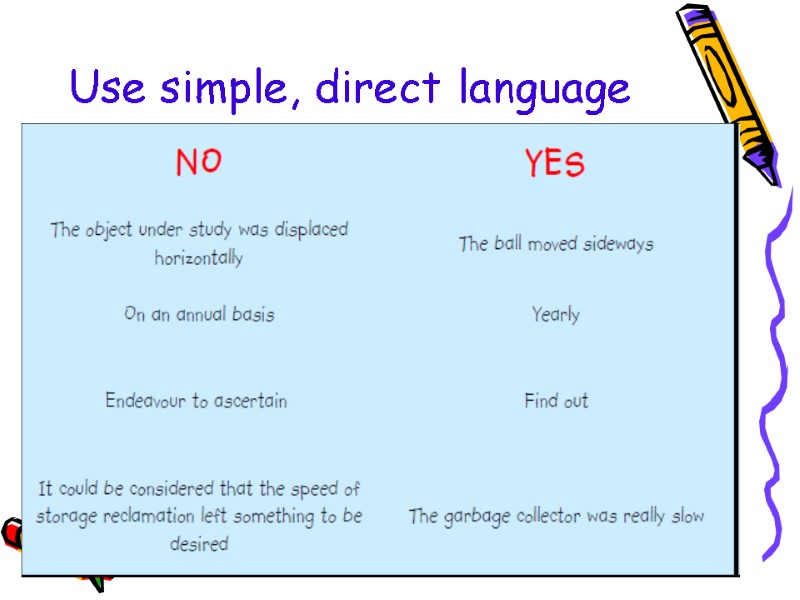
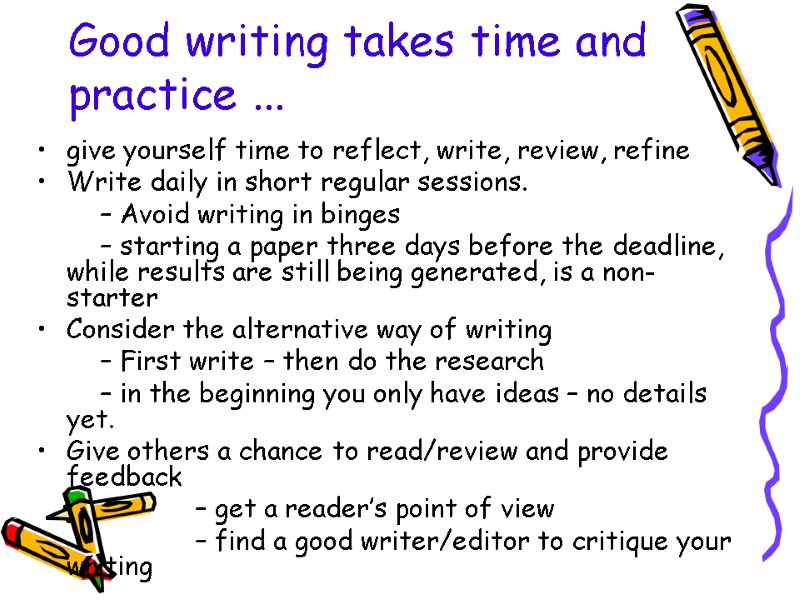
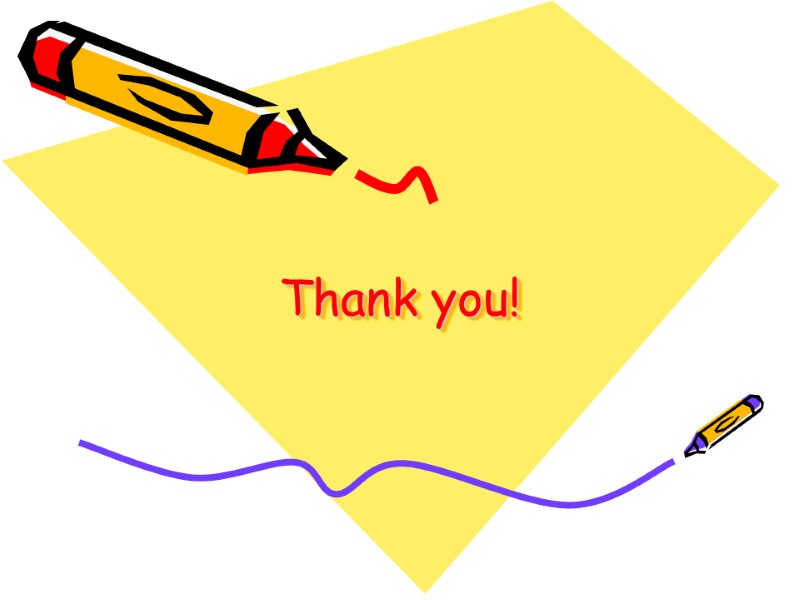
14670-training_1.ppt
- Количество слайдов: 53
 How to write a great research paper Mazorenko Oksana Vladimirovna
How to write a great research paper Mazorenko Oksana Vladimirovna
 What is a Scientific Paper ? A scientific paper is a written and published report describing original research results
What is a Scientific Paper ? A scientific paper is a written and published report describing original research results
 Why bother? Fallacy we write papers and give talks mainly to impress others, gain recognition, and get promoted
Why bother? Fallacy we write papers and give talks mainly to impress others, gain recognition, and get promoted
 Papers communicate ideas Your goal: to infect the mind of your reader with your idea, like a virus Papers are far more durable than programs The greatest ideas are (literally) worthless if you keep them to yourself
Papers communicate ideas Your goal: to infect the mind of your reader with your idea, like a virus Papers are far more durable than programs The greatest ideas are (literally) worthless if you keep them to yourself
 Writing papers: model 1
Writing papers: model 1
 Writing papers: model 2 Forces us to be clear, focused Crystallises what we don’t understand Opens the way to dialogue with others: reality check, critique, and collaboration
Writing papers: model 2 Forces us to be clear, focused Crystallises what we don’t understand Opens the way to dialogue with others: reality check, critique, and collaboration
 Do not be intimidated Fallacy You need to have a fantastic idea before you can write a paper or give a talk. (Everyone else seems to.) Write a paper, and give a talk, about any idea, no matter how weedy and insignificant it may seem to you
Do not be intimidated Fallacy You need to have a fantastic idea before you can write a paper or give a talk. (Everyone else seems to.) Write a paper, and give a talk, about any idea, no matter how weedy and insignificant it may seem to you
 Do not be intimidated Write a paper, and give a talk, about any idea, no matter how insignificant it may seem to you Writing the paper is how you develop the idea in the first place It usually turns out to be more interesting and challenging that it seemed at first
Do not be intimidated Write a paper, and give a talk, about any idea, no matter how insignificant it may seem to you Writing the paper is how you develop the idea in the first place It usually turns out to be more interesting and challenging that it seemed at first
 The purpose of your paper
The purpose of your paper
 The purpose of your paper is... To convey your idea ...from your head to your reader’s head Everything serves this single goal
The purpose of your paper is... To convey your idea ...from your head to your reader’s head Everything serves this single goal
 Conveying the idea Here is a problem It’s an interesting problem It’s an unsolved problem Here is my idea My idea works (details, data) Here’s how my idea compares to other people’s approaches
Conveying the idea Here is a problem It’s an interesting problem It’s an unsolved problem Here is my idea My idea works (details, data) Here’s how my idea compares to other people’s approaches
 Structure Abstract (min 25 words, 3 languages) Key words (5-10) Introduction The problem My idea The details Related work Conclusions and further work References
Structure Abstract (min 25 words, 3 languages) Key words (5-10) Introduction The problem My idea The details Related work Conclusions and further work References
 The abstract I usually write the abstract last Four sentences: 1. State the problem 2. Say why it’s an interesting problem 3. Say what your solution achieves 4. Say what follows from your solution
The abstract I usually write the abstract last Four sentences: 1. State the problem 2. Say why it’s an interesting problem 3. Say what your solution achieves 4. Say what follows from your solution
 Style The Abstract is ONLY text. Use the active voice when possible, but much of it may require passive constructions. Write your Abstract using concise, but complete sentences, and get to the point quickly. Use past tense. Maximum length should be 100 words, usually in a single paragraph.
Style The Abstract is ONLY text. Use the active voice when possible, but much of it may require passive constructions. Write your Abstract using concise, but complete sentences, and get to the point quickly. Use past tense. Maximum length should be 100 words, usually in a single paragraph.
 The Abstract SHOULD NOT contain: lengthy background information, references to other literature, elliptical (i.e., ending with ...) or incomplete sentences, abbreviations or terms that may be confusing to readers, any sort of illustration, figure, or table, or references to them.
The Abstract SHOULD NOT contain: lengthy background information, references to other literature, elliptical (i.e., ending with ...) or incomplete sentences, abbreviations or terms that may be confusing to readers, any sort of illustration, figure, or table, or references to them.
 Example This paper is dedicated to the field of enterprise service activities, especially to optimising and increasing their productivity and consequently to increasing the productivity of main enterprise processes. It follows the design of enterprise service activities content definition upon the basis of Infrastructural Facility Management. The paper focuses on the incorporation of service activities into the organisational and managing enterprise structures as well as on analysing the factors influencing their effectiveness, respectively the effectiveness of main enterprise activities. It makes a review of the theoretical knowledge in service activities within domestic and foreign production enterprises.
Example This paper is dedicated to the field of enterprise service activities, especially to optimising and increasing their productivity and consequently to increasing the productivity of main enterprise processes. It follows the design of enterprise service activities content definition upon the basis of Infrastructural Facility Management. The paper focuses on the incorporation of service activities into the organisational and managing enterprise structures as well as on analysing the factors influencing their effectiveness, respectively the effectiveness of main enterprise activities. It makes a review of the theoretical knowledge in service activities within domestic and foreign production enterprises.
 Structure Abstract (min 25 words, 3 languages) Key words (5-10) Introduction The problem My idea The details Related work Conclusions and further work References
Structure Abstract (min 25 words, 3 languages) Key words (5-10) Introduction The problem My idea The details Related work Conclusions and further work References
 The introduction problem definition and its relationship with important practical tasks (5-10 lines), the relevance and appropriateness of questions (5-10 lines), recent studies and publications relied upon by the author, the determination that part of the whole problem, which is devoted this article.
The introduction problem definition and its relationship with important practical tasks (5-10 lines), the relevance and appropriateness of questions (5-10 lines), recent studies and publications relied upon by the author, the determination that part of the whole problem, which is devoted this article.
 The introduction Describe the problem Describe the actuality ...and that is all ONE PAGE! or Not more than 10% of the full paper
The introduction Describe the problem Describe the actuality ...and that is all ONE PAGE! or Not more than 10% of the full paper
 Describe the problem
Describe the problem
![>No related work yet! We adopt the notion of transaction from Brown [1], as >No related work yet! We adopt the notion of transaction from Brown [1], as](https://present5.com/presentacii-2/20171208\14670-training_1.ppt\14670-training_1_21.jpg) No related work yet! We adopt the notion of transaction from Brown [1], as modified for distributed systems by White [2], using the four-phase interpolation algorithm of Green [3]. Our work differs from White in our advanced revocation protocol, which deals with the case of priority inversion as described by Yellow [4].
No related work yet! We adopt the notion of transaction from Brown [1], as modified for distributed systems by White [2], using the four-phase interpolation algorithm of Green [3]. Our work differs from White in our advanced revocation protocol, which deals with the case of priority inversion as described by Yellow [4].
 No related work yet Problem 1: describing alternative approaches gets between the reader and your idea Problem 2: the reader knows nothing about the problem yet; so your (carefully trimmed) description of various technical tradeoffs is absolutely incomprehensible
No related work yet Problem 1: describing alternative approaches gets between the reader and your idea Problem 2: the reader knows nothing about the problem yet; so your (carefully trimmed) description of various technical tradeoffs is absolutely incomprehensible
 Structure Abstract (min 25 words, 3 languages) Key words (5-10) Introduction The problem My idea The details Related work Conclusions and further work References
Structure Abstract (min 25 words, 3 languages) Key words (5-10) Introduction The problem My idea The details Related work Conclusions and further work References
 The problem formulation objectives of the research. This part is very important, because with it the reader determine for themselves the usefulness of the proposed article, the purpose of the article follows from the general problem formulation and review of earlier studies, that this article is intended to eliminate the "blind spots" in the general problem (volume of this paragraph 5 - 10 lines).
The problem formulation objectives of the research. This part is very important, because with it the reader determine for themselves the usefulness of the proposed article, the purpose of the article follows from the general problem formulation and review of earlier studies, that this article is intended to eliminate the "blind spots" in the general problem (volume of this paragraph 5 - 10 lines).
 Structure Abstract (min 25 words, 3 languages) Key words (5-10) Introduction The problem My idea The details Related work Conclusions and further work References
Structure Abstract (min 25 words, 3 languages) Key words (5-10) Introduction The problem My idea The details Related work Conclusions and further work References
 Basic materials Concentrate single-mindedly on a narrative that Describes your idea Defends your idea, showing how it solves the problem
Basic materials Concentrate single-mindedly on a narrative that Describes your idea Defends your idea, showing how it solves the problem
 Presenting the idea Explain it as if you were speaking to someone using a whiteboard Conveying the intuition is primary, not secondary Once your reader has the intuition, she can follow the details (but not vice versa) Even if she skips the details, she still takes away something valuable
Presenting the idea Explain it as if you were speaking to someone using a whiteboard Conveying the intuition is primary, not secondary Once your reader has the intuition, she can follow the details (but not vice versa) Even if she skips the details, she still takes away something valuable
 Putting the reader first Do not recapitulate your personal journey of discovery. This route may be soaked with your blood, but that is not interesting to the reader. Instead, choose the most direct route to the idea. Write top down – engineers (and most human beings) think this way! State broad themes/ideas first, then go into detail – context, context, context ! even when going into detail … write top down!
Putting the reader first Do not recapitulate your personal journey of discovery. This route may be soaked with your blood, but that is not interesting to the reader. Instead, choose the most direct route to the idea. Write top down – engineers (and most human beings) think this way! State broad themes/ideas first, then go into detail – context, context, context ! even when going into detail … write top down!
 The payload of your paper Sounds impressive...but Sends readers to sleep In a paper you MUST provide the details, but FIRST convey the idea
The payload of your paper Sounds impressive...but Sends readers to sleep In a paper you MUST provide the details, but FIRST convey the idea
 The payload of your paper
The payload of your paper
 Evidence Your introduction makes claims The body of the paper provides evidence to support each claim Check each claim in the introduction, identify the evidence, and forward-reference it from the claim Evidence can be: analysis and comparison, theorems, measurements, case studies
Evidence Your introduction makes claims The body of the paper provides evidence to support each claim Check each claim in the introduction, identify the evidence, and forward-reference it from the claim Evidence can be: analysis and comparison, theorems, measurements, case studies
 The details: evidence Statements to provide evidence must be refutable – Give reference or prove the claim Sometimes it is helpful to give an example where your method fails don’t overload reader with 40 graphs: – think about main points you want to convey with graphs – can’t explore entire parameter space don’t overload reader with pages of equations – put long derivations/proofs in appendix, provide sketch in body of paper
The details: evidence Statements to provide evidence must be refutable – Give reference or prove the claim Sometimes it is helpful to give an example where your method fails don’t overload reader with 40 graphs: – think about main points you want to convey with graphs – can’t explore entire parameter space don’t overload reader with pages of equations – put long derivations/proofs in appendix, provide sketch in body of paper
 Related work Fallacy To make my work look good, I have to make other people’s work look bad
Related work Fallacy To make my work look good, I have to make other people’s work look bad
 The truth: credit is not like money Giving credit to others does not diminish the credit you get from your paper Warmly acknowledge people who have helped you Be generous to the competition. “In his inspiring paper [Foo98] Foogle shows.... We develop his foundation in the following ways...” Acknowledge weaknesses in your approach
The truth: credit is not like money Giving credit to others does not diminish the credit you get from your paper Warmly acknowledge people who have helped you Be generous to the competition. “In his inspiring paper [Foo98] Foogle shows.... We develop his foundation in the following ways...” Acknowledge weaknesses in your approach
 Credit is not like money Failing to give credit to others can kill your paper If you imply that an idea is yours, and the referee knows it is not, then either You don’t know that it’s an old idea (bad) You do know, but are pretending it’s yours (very bad)
Credit is not like money Failing to give credit to others can kill your paper If you imply that an idea is yours, and the referee knows it is not, then either You don’t know that it’s an old idea (bad) You do know, but are pretending it’s yours (very bad)
 Making sure related work is accurate A good plan: when you think you are done, send the draft to the competition saying “could you help me ensure that I describe your work fairly?”. Often they will respond with helpful critique They are likely to be your referees anyway, so getting their comments up front is jolly good.
Making sure related work is accurate A good plan: when you think you are done, send the draft to the competition saying “could you help me ensure that I describe your work fairly?”. Often they will respond with helpful critique They are likely to be your referees anyway, so getting their comments up front is jolly good.
 Structure Abstract (min 25 words, 3 languages) Key words (5-10) Introduction The problem My idea The details Related work Conclusions and further work References
Structure Abstract (min 25 words, 3 languages) Key words (5-10) Introduction The problem My idea The details Related work Conclusions and further work References
 Conclusion Summarize main points – take-home message Don’t give new explanations, just the facts For a change – put conclusions in the beginning of the paper Future work … ? I would drop it … for various reasons
Conclusion Summarize main points – take-home message Don’t give new explanations, just the facts For a change – put conclusions in the beginning of the paper Future work … ? I would drop it … for various reasons
 References bibliographic apparatus, which includes descriptions of sources in alphabetical order of the first author or title.
References bibliographic apparatus, which includes descriptions of sources in alphabetical order of the first author or title.
 Functions of References To give credit to others for their work To add credibility to your work by showing that you used valid information sources To help show how your work is related to previous work To help readers find further information
Functions of References To give credit to others for their work To add credibility to your work by showing that you used valid information sources To help show how your work is related to previous work To help readers find further information
 References: Importance of Accuracy Studies show that many references are inaccurate. For references to fulfill their functions, they must be accurate. Therefore Make sure that you accurately state what the cited material says. Make sure that all information in the citation (for example, author list, article title, journal title, volume, year, pages) is accurate.
References: Importance of Accuracy Studies show that many references are inaccurate. For references to fulfill their functions, they must be accurate. Therefore Make sure that you accurately state what the cited material says. Make sure that all information in the citation (for example, author list, article title, journal title, volume, year, pages) is accurate.
 Another Reason Your References Should Be Accurate Often, authors whose work you cite will be your peer reviewers. Inaccurate references to their work will not impress them favorably.
Another Reason Your References Should Be Accurate Often, authors whose work you cite will be your peer reviewers. Inaccurate references to their work will not impress them favorably.
 Examples Bennis W. G. An invented life : reflections on leadership and change / W. G. Bennis. – Massachusetts: Addison-Wesley Pub. Co., 1994 – 256 р. Beckhard R. Organizational transitions: managing complex change / R. Beckhard, T. H. Reuben. – New York : Addison-Wesley Pub. Co., 1987. – 117 p. Barnett W. Modeling internal organizational change / W. Barnett, G. Carroll // Annual Review of Sociology. – 1995. – Vol. 21, № 1. – P. 217 – 236. Mitry D. Managerial leadership and cultural differences of Eastern European economics. / D. Mitry, T. Bradly. [Electronic resource]. – Access mode : http://marketing.byu.edu/htmlpages/ccrs/proceedings99/mitrybradley.htm
Examples Bennis W. G. An invented life : reflections on leadership and change / W. G. Bennis. – Massachusetts: Addison-Wesley Pub. Co., 1994 – 256 р. Beckhard R. Organizational transitions: managing complex change / R. Beckhard, T. H. Reuben. – New York : Addison-Wesley Pub. Co., 1987. – 117 p. Barnett W. Modeling internal organizational change / W. Barnett, G. Carroll // Annual Review of Sociology. – 1995. – Vol. 21, № 1. – P. 217 – 236. Mitry D. Managerial leadership and cultural differences of Eastern European economics. / D. Mitry, T. Bradly. [Electronic resource]. – Access mode : http://marketing.byu.edu/htmlpages/ccrs/proceedings99/mitrybradley.htm
 Language and style
Language and style
 Basic stuff Submit by the deadline Keep to the length restrictions Do not narrow the margins Do not use 6pt font On occasion, supply supporting evidence (e.g. experimental data, or a written-out proof) in an appendix Always use a spell checker
Basic stuff Submit by the deadline Keep to the length restrictions Do not narrow the margins Do not use 6pt font On occasion, supply supporting evidence (e.g. experimental data, or a written-out proof) in an appendix Always use a spell checker
 Visual structure Give strong visual structure to your paper using sections and sub-sections bullets italics laid-out code 2. Find out how to draw pictures, and use them
Visual structure Give strong visual structure to your paper using sections and sub-sections bullets italics laid-out code 2. Find out how to draw pictures, and use them
 General requirements for citation text of citation begins and ends with quotation marks and grammar is provided in the form in which it is presented in the source, while preserving features authors writing. citation must be complete, no arbitrary cuts author's text and the author's thoughts without distortion each citation is necessarily accompanied by a reference to the source;
General requirements for citation text of citation begins and ends with quotation marks and grammar is provided in the form in which it is presented in the source, while preserving features authors writing. citation must be complete, no arbitrary cuts author's text and the author's thoughts without distortion each citation is necessarily accompanied by a reference to the source;
 General requirements for citation (continuation) the indirect citation (tradition, presenting the views of other authors own words), should be given appropriate links to the source; if the author of the article, citing a quote, it highlights some of the words, is a special reservation. Variants such clauses are: (our italics. – M.O.) (emphasis mine. – M.O.), (discharging mine. – M.O.)
General requirements for citation (continuation) the indirect citation (tradition, presenting the views of other authors own words), should be given appropriate links to the source; if the author of the article, citing a quote, it highlights some of the words, is a special reservation. Variants such clauses are: (our italics. – M.O.) (emphasis mine. – M.O.), (discharging mine. – M.O.)
 Example of citation Quote from the text: "Despite the priority language channels of communication between business partners, in any case not be ignored major channels of information" [6, p.23].
Example of citation Quote from the text: "Despite the priority language channels of communication between business partners, in any case not be ignored major channels of information" [6, p.23].
 Use the active voice
Use the active voice
 Use simple, direct language
Use simple, direct language
 Good writing takes time and practice ... give yourself time to reflect, write, review, refine Write daily in short regular sessions. – Avoid writing in binges – starting a paper three days before the deadline, while results are still being generated, is a non-starter Consider the alternative way of writing – First write – then do the research – in the beginning you only have ideas – no details yet. Give others a chance to read/review and provide feedback – get a reader’s point of view – find a good writer/editor to critique your writing
Good writing takes time and practice ... give yourself time to reflect, write, review, refine Write daily in short regular sessions. – Avoid writing in binges – starting a paper three days before the deadline, while results are still being generated, is a non-starter Consider the alternative way of writing – First write – then do the research – in the beginning you only have ideas – no details yet. Give others a chance to read/review and provide feedback – get a reader’s point of view – find a good writer/editor to critique your writing
 Thank you!
Thank you!
